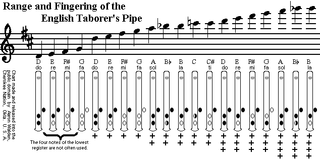
A musical ensemble, also known as a music group or musical group, is a group of people who perform instrumental or vocal music, with the ensemble typically known by a distinct name. Some music ensembles consist solely of instruments, such as the jazz quartet or the orchestra. Some music ensembles consist solely of singers, such as choirs and doo wop groups. In both popular music and classical music, there are ensembles in which both instrumentalists and singers perform, such as the rock band or the Baroque chamber group for basso continuo and one or more singers. In classical music, trios or quartets either blend the sounds of musical instrument families or group together instruments from the same instrument family, such as string ensembles or wind ensembles. Some ensembles blend the sounds of a variety of instrument families, such as the orchestra, which uses a string section, brass instruments, woodwinds and percussion instruments, or the concert band, which uses brass, woodwinds and percussion.

The oboe is a type of double reed woodwind instrument. Oboes are usually made of wood, but may also be made of synthetic materials, such as plastic, resin or hybrid composites. The most common oboe plays in the treble or soprano range. A soprano oboe measures roughly 65 cm long, with metal keys, a conical bore and a flared bell. Sound is produced by blowing into the reed at a sufficient air pressure, causing it to vibrate with the air column. The distinctive tone is versatile and has been described as "bright". When the word oboe is used alone, it is generally taken to mean the treble instrument rather than other instruments of the family, such as the bass oboe, the cor anglais, or oboe d'amore.

An orchestra is a large instrumental ensemble typical of classical music, which combines instruments from different families, including bowed string instruments such as the violin, viola, cello, and double bass, brass instruments such as the horn, trumpet, trombone and tuba, woodwinds such as the flute, oboe, clarinet and bassoon, and percussion instruments such as the timpani, bass drum, triangle, snare drum, cymbals, and mallet percussion instruments each grouped in sections. Other instruments such as the piano and celesta may sometimes appear in a fifth keyboard section or may stand alone, as may the concert harp and, for performances of some modern compositions, electronic instruments.

Orchestration is the study or practice of writing music for an orchestra or of adapting music composed for another medium for an orchestra. Also called "instrumentation", orchestration is the assignment of different instruments to play the different parts of a musical work. For example, a work for solo piano could be adapted and orchestrated so that an orchestra could perform the piece, or a concert band piece could be orchestrated for a symphony orchestra.

Throughout history, various methods of musical instrument classification have been used in organology. The most commonly used system divides instruments into string instruments, woodwind instruments, brass instruments and percussion instruments; however, other schemes have been devised.

A mute is a device fitted to a musical instrument to alter the sound produced: by affecting the timbre, reducing the volume, or most commonly both. The use of a mute is usually indicated in musical notation by the Italian direction con sordino and removed with the direction senza sordino or via sordino. The spelling sordino is standard in musical notation, but in Italian, the proper spelling is sordina.
A slur is a symbol in Western musical notation indicating that the notes it embraces are to be played without separation. A slur is denoted with a curved line generally placed over the notes if the stems point downward, and under them if the stems point upwards.
Prime functions of the slur in keyboard music...are to delineate the extent of a phrase line and to indicate the legato performance of melodies or arpeggiated chords.
Both accents and slurs relate directly to woodwind articulation...(and brass as well) [since they] employ a variety of tonguing effects [which are indicated by use of, "the correct form," of accents and slurs].
[With bowed string instruments] A curved slur over or under two or more notes indicates that these notes are to be connected...Slurs are only partially indicative of phrasing; if an actual phrase mark is necessary, it should be notated above the passage with broken lines.
Bedouin music is the music of nomadic Bedouin tribes of the Arabian Peninsula, Sudan and the Levant. It is closely linked to its text. Songs are based on poetry and are sung either unaccompanied, or to the stringed instrument, the rebab. Traditional instruments are the rebab and various woodwinds.

Conn-Selmer, Inc. is an American manufacturer of musical instruments for concert bands, marching bands and orchestras. It is a wholly owned subsidiary of Steinway Musical Instruments and was formed in 2003 by combining the Steinway properties The Selmer Company and United Musical Instruments.

In music, the range, or chromatic range, of a musical instrument is the distance from the lowest to the highest pitch it can play. For a singing voice, the equivalent is vocal range. The range of a musical part is the distance between its lowest and highest note.
D'Addario is a manufacturer of musical instrument strings and accessories, primarily for guitars but also many other fretted and orchestral instruments. The company currently has its world headquarters in Farmingdale, Long Island, New York, and its European headquarters in Newcastle upon Tyne, England. It is a family-owned and operated business that is one of the largest string manufacturers in the world, not only producing several lines of strings under their own brand names, but also making OEM strings for other musical instrument companies.
Articulation is a fundamental musical parameter that determines how a single note or other discrete event is sounded. Articulations primarily structure an event's start and end, determining the length of its sound and the shape of its attack and decay. They can also modify an event's timbre, dynamics, and pitch. Musical articulation is analogous to the articulation of speech, and during the Baroque and Classical periods it was taught by comparison to oratory.

Classical music is art music produced or rooted in the traditions of Western culture, including both liturgical (religious) and secular music. While a more precise term is also used to refer to the period from 1750 to 1820, this article is about the broad span of time from before the 6th century AD to the present day, which includes the Classical period and various other periods. The central norms of this tradition became codified between 1550 and 1900, which is known as the common-practice period.

Musical technique is the ability of instrumental and vocal musicians to exert optimal control of their instruments or vocal cords in order to produce the precise musical effects they desire. Improving one's technique generally entails practicing exercises that improve one's muscular sensitivity and agility. Technique is independent of musicality. Compositional technique is the ability and knowledge composers use to create music, and may be distinguished from instrumental or performance technique, which in classical music is used to realize compositions, but may also be used in musical improvisation. Extended techniques are distinguished from more simple and more common techniques. Musical technique may also be distinguished from music theory, in that performance is a practical matter, but study of music theory is often used to understand better and to improve techniques. Techniques such as intonation or timbre, articulation, and musical phrasing are nearly universal to all instruments.

Toot, Whistle, Plunk and Boom is an educational Adventures in Music animated short film produced by Walt Disney Productions, and originally released to theaters by his Buena Vista Film Distribution Company on November 10, 1953. A sequel to the first Adventures in Music cartoon, the 3-D short Melody, Toot, Whistle, Plunk and Boom is a stylized presentation of the evolution of the four orchestra sections over the ages with: the brass ("toot"), the woodwind ("whistle"), the strings ("plunk"), and the percussion ("boom").
Roman Haubenstock-Ramati was a composer and music editor who worked in Kraków, Tel Aviv and Vienna.
The shorthand for the orchestration of a classical symphony orchestra, or Orchestra Instrumentation Numerical Notation, is used to outline which and how many instruments, especially wind instruments, are called for in a given piece of music. The shorthand is ordered in the same fashion as the parts of the individual instruments in the score, read from top to bottom.
The woodwind section, which consists of woodwind instruments, is one of the main sections of an orchestra or concert band. Woodwind sections contain instruments given Hornbostel-Sachs classifications of 421 and 422, but exclude 423.
The Florida Music Education Association (FMEA) is a non-profit umbrella association of music education groups in the State of Florida that sets standards for the state in music education, provides continuing education and training opportunities to music educators in the state, provides a job bank for music educators, promotes the interests of music education with state and federal legislators, and showcases the top talents in high school and college jazz, concert band, classical, and choral performance in their annual FMEA All-State honor bands and orchestras at their annual meeting in Tampa in January of each year.
Musical instruments used in Baroque music were partly used already before, partly are still in use today, but with no technology. The movement to perform music in a historically informed way, trying to recreate the sound of the period, led to the use of historic instruments of the period and to the reconstruction of instruments.











